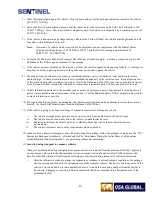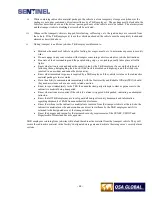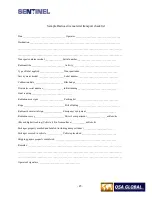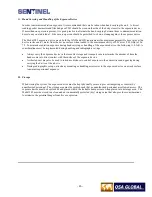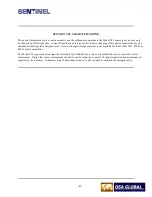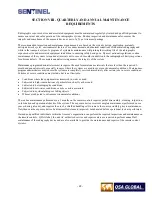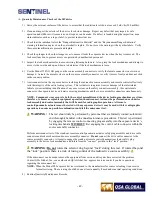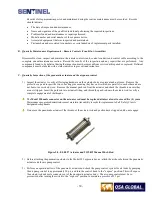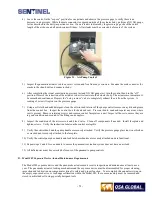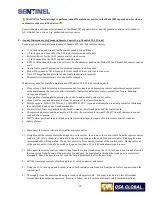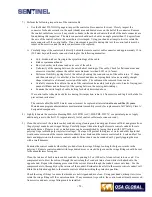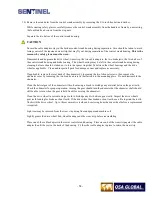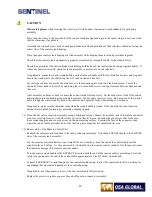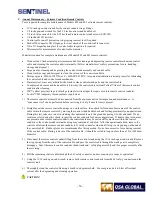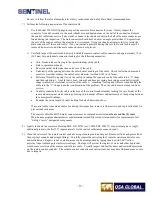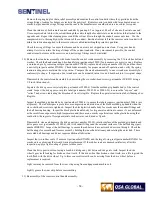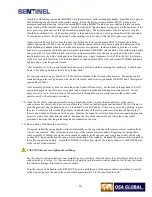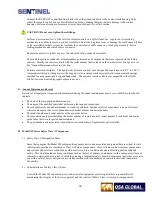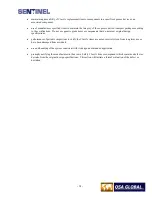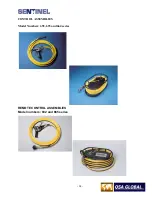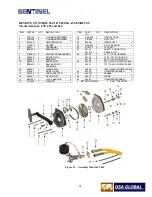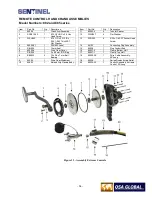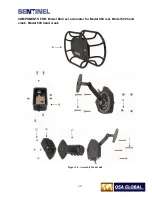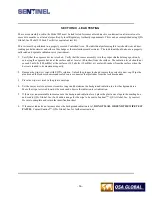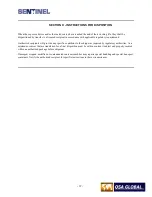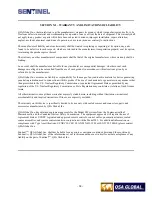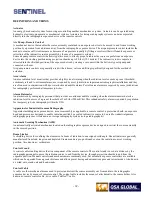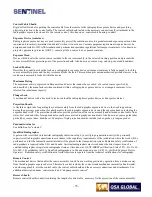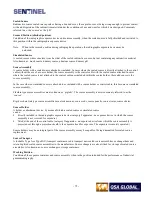
- 56 -
F.
Annual Maintenance – Extreme Condition Remote Controls
Tools required for complete maintenance of Models 882 and 885 extreme remote controls:
•
11/16 inch open-end wrench for the control conduit swage fittings.
•
1/2 inch open-end wrench for the 5/16 inch control crank handle bolt.
•
1/8 inch Allen wrench for the 8-32 hex-head remote control crank screws (SCR-252).
•
1/8 inch drill, #21 drill bit.
•
Control cable run-off prevention (stop) spring removal tool if required.
•
Model 550 connector NO GO gauge for wear check of the control cable connector.
•
X4 to X7 magnification glass for control cable inspection if required.
•
Micrometer for measurement of control cable diameter.
Materials required for complete maintenance of Models 882 and 885 remote controls:
•
Clean solvent: fresh mineral spirits recommended for cleaning and degreasing remote control mechanism, control
cable and cleaning the control conduits internally. (Follow manufacturer’s safety precautions for use, handling,
storage and disposal.)
•
Large pan for cleaning and degreasing the control crank assembly and control cable.
•
Clean lint-free rags and detergent to clean the exterior of the control conduits.
•
Mil-spec grease, MIL-G-23827B (or C), MIL-PRF-23827C (or equivalent radiation resistant grease) for lubricating
the control cable and control crank mechanism.
•
Stainless steel, brass or synthetic bristle brush to clean control crank parts and the control cable.
•
Compressed air source and hand nozzle to blow dry the control cable internal Teflon™ liner of the remote control
conduits after cleaning.
•
3M™ yellow polyvinyl tape (or black polyvinyl electrical tape) for repair of cuts in remote control conduits.
•
Loctite™ 242 temporary thread sealant or equivalent.
1)
The remote control unit must be disconnected from the exposure device for inspection and maintenance. A
“misconnect test” can be performed before servicing to verify if unsafe wear is present.
2)
Straighten out the remote control housings on a work surface, then check for freedom of movement of the control
cable within the remote controls by moving the control crank handle back and forth approximately one-quarter turn.
During this test, take care to avoid cranking the control cable onto the ground exposing it to dirt and sand. If any
resistance is felt during this check, inspect the control conduits for dents or depressions. If dents or depressions are
not present on the remote control conduits, the control cable may be rusted stiff somewhere within the control
conduits or the control crank internal housing may contain dirt or debris. After the operational check, remove the
control cable from the remote control conduits (661 safety connector side) until it stops (a stop spring on the end of
the control cable). Rubber gloves are recommended for this operation. Do not use excessive force during removal
of the control cable. During removal of the control cable, it should be coiled in loops no less than a 12 in (305 mm)
diameter.
3)
Disconnect the remote control conduit fitting from the control crank using the 11/16 inch open-end wrench. Remove
the stop spring from the end of the control cable, and pass the control cable through the crank gear to completely
disengage. Label the remote control conduits (hand crank end / safety plug assembly end) for proper assembly after
the servicing.
4)
Pull the remaining control cable through the 661 safety connector, and secure using tie wraps or equivalent.
5)
Using the 11/16 inch open-end wrench, remove both remote control conduits from the 661 safety connector and the
control crank.
6)
Thoroughly clean the control cable using a brush in a degreaser bath. Use compressed air to blow off residual
solvent after the degreasing and cleaning operation.
CAUTION!
Summary of Contents for 989
Page 1: ...MAN 037 October 2017 ...


